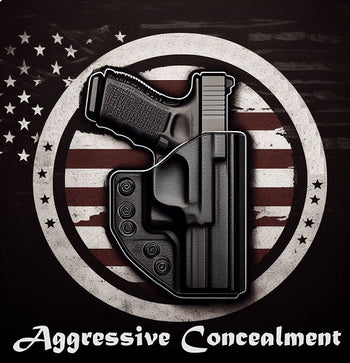What is a holster concealment claw?
Holsters are an essential tool for carrying firearms, whether you are a law enforcement officer, a military personnel or a civilian gun owner. They help to keep your firearm secure and accessible, while also ensuring safety. However, when it comes to concealed carry, choosing the right holster can be a challenge. One feature that has become increasingly popular in recent years is the concealment claw. In this blog post, we will discuss what a concealment claw is and how it can improve your concealed carry experience.
What is a Concealment Claw?
A concealment claw, also known as a wing or appendix grip, is a small extension on the side of a holster that helps to push the grip of the gun closer to the body. This creates a more concealed and comfortable carry experience. The claw is typically made of plastic or metal and is attached to the holster using screws or other fasteners.
How Does it Work?
The idea behind the concealment claw is to improve the angle of the grip of the gun, so that it sits more flush against the body. This reduces the printing effect, which occurs when the outline of the gun is visible through clothing. By reducing printing, the claw makes it easier to conceal your firearm, even under light clothing.
In addition to improving concealment, the claw also helps to improve the overall comfort of carrying your firearm. When the grip is pulled in closer to the body, it reduces the amount of pressure on your waistband or belt. This can help to prevent discomfort and even back pain associated with carrying a firearm for extended periods of time.
Advantages of a Concealment Claw
1. Improved Concealment - As mentioned above, the claw helps to reduce the printing effect, making it easier to conceal your firearm, even under light clothing.
2. Better Comfort - The claw helps to reduce the pressure on your waistband or belt, which can help to prevent discomfort and back pain.
3. Faster Draw - The claw helps to create a better grip angle, which can result in a faster and smoother draw.
4. Increased Stability - The claw provides additional stability to your firearm, reducing the chance of it shifting or moving around in your holster.
Disadvantages of a Concealment Claw
1. May not work with all body types - The claw may not be effective for all body types. People with larger midsections or those who carry their weight in their hips may not experience the same benefits as those with a slimmer body type.
2. Requires a specific type of holster - Not all holsters are designed to accommodate a concealment claw. You may need to purchase a specific holster or modify an existing holster to accommodate the claw.
In conclusion, a concealment claw can be a valuable addition to your holster if you are looking for improved concealment and comfort. While it may not be effective for all body types and requires a specific type of holster, the benefits of a concealment claw are well worth considering. It can help to reduce printing, increase stability, and provide a faster draw, all while making the overall carry experience more comfortable.
What is a Concealment Claw?
A concealment claw, also known as a wing or appendix grip, is a small extension on the side of a holster that helps to push the grip of the gun closer to the body. This creates a more concealed and comfortable carry experience. The claw is typically made of plastic or metal and is attached to the holster using screws or other fasteners.
How Does it Work?
The idea behind the concealment claw is to improve the angle of the grip of the gun, so that it sits more flush against the body. This reduces the printing effect, which occurs when the outline of the gun is visible through clothing. By reducing printing, the claw makes it easier to conceal your firearm, even under light clothing.
In addition to improving concealment, the claw also helps to improve the overall comfort of carrying your firearm. When the grip is pulled in closer to the body, it reduces the amount of pressure on your waistband or belt. This can help to prevent discomfort and even back pain associated with carrying a firearm for extended periods of time.
Advantages of a Concealment Claw
1. Improved Concealment - As mentioned above, the claw helps to reduce the printing effect, making it easier to conceal your firearm, even under light clothing.
2. Better Comfort - The claw helps to reduce the pressure on your waistband or belt, which can help to prevent discomfort and back pain.
3. Faster Draw - The claw helps to create a better grip angle, which can result in a faster and smoother draw.
4. Increased Stability - The claw provides additional stability to your firearm, reducing the chance of it shifting or moving around in your holster.
Disadvantages of a Concealment Claw
1. May not work with all body types - The claw may not be effective for all body types. People with larger midsections or those who carry their weight in their hips may not experience the same benefits as those with a slimmer body type.
2. Requires a specific type of holster - Not all holsters are designed to accommodate a concealment claw. You may need to purchase a specific holster or modify an existing holster to accommodate the claw.
In conclusion, a concealment claw can be a valuable addition to your holster if you are looking for improved concealment and comfort. While it may not be effective for all body types and requires a specific type of holster, the benefits of a concealment claw are well worth considering. It can help to reduce printing, increase stability, and provide a faster draw, all while making the overall carry experience more comfortable.
